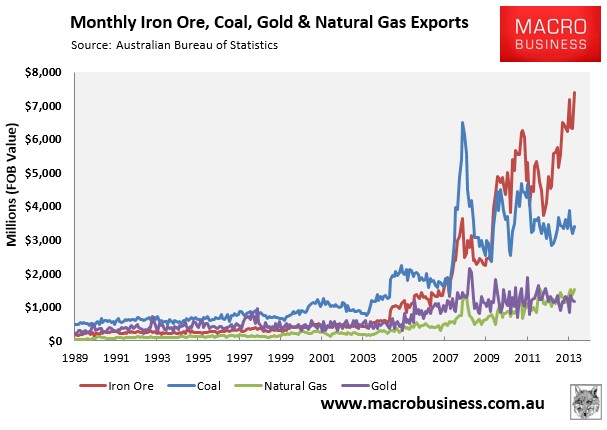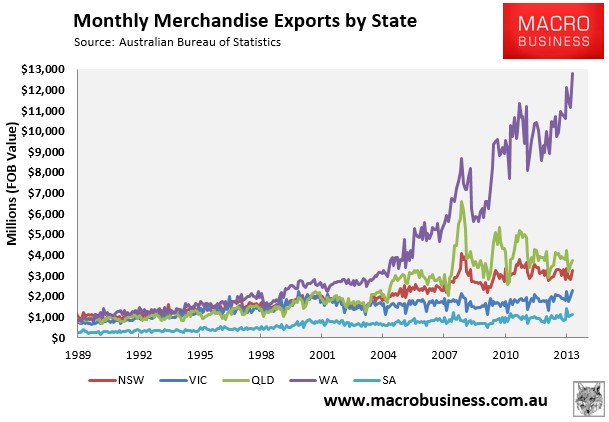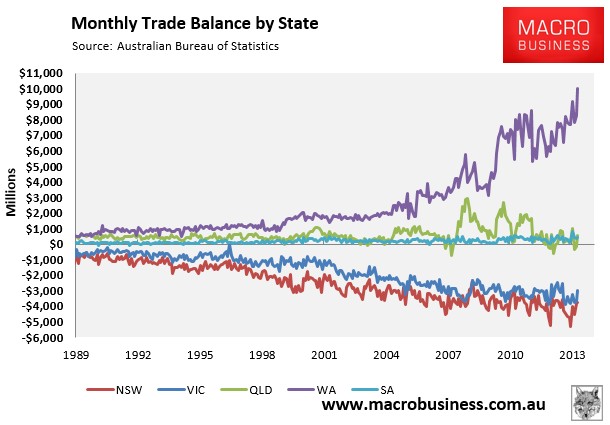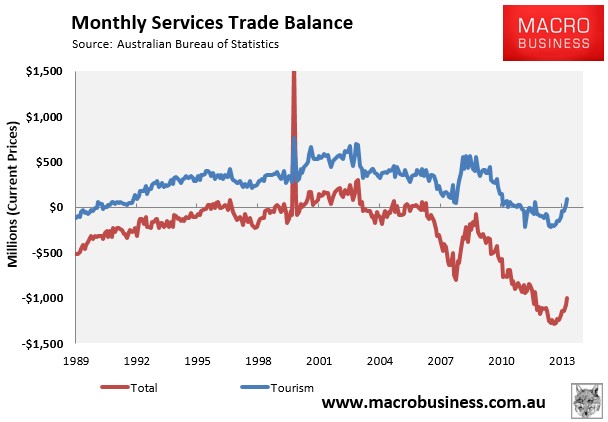
The Australian Bureau of Statistics (ABS) has released trade data for the month of March, with Australia recording a seasonally-adjusted trade surplus of $731 million. The result missed analyst’s expectations, which had expected a trade surplus of $1 billion.
It was the 4rd monthly trade surplus in a row and followed the $1,257 million surplus recorded in February (revised up from $1,200 million) and the $1,122 million surplus recorded in January (revised down from $1,392 million). The next chart shows the quarterly breakdown. As you can see, there was a $4,188 million turnaround from the December quarter, indicating a strong positive contribution to the March quarter GDP result:

In seasonally adjusted terms, exports fell $547 million (2%) to $29,033 million, partly offset by a $21 million fall in imports to $28,302 million.
Australia’s biggest export commodity – iron ore (29.3% share) – rose by $1,068 million in March in raw terms to a record $7,381 million. Australia’s second and third biggest exports – coal (14.1 share%) and gas (6.1% share) – also rose by $205 million and $150 million respectively, whereas our fourth biggest export commodity – gold (4.6%) fell by $29 million (see next chart).

Exports to China – Australia’s biggest market – rose by $1,572 million to a record $9,513 million in raw terms, with its share of total exports also hitting a record 37.8%. Exports to our second and third biggest markets – Japan (17.6% share) and Korea (7.9% share) – also rose by $421 million and $222 million respectively, whereas exports to India – Australia’s fourth biggest export market (2.5% share) – fell by by $24 million (see next chart).

As always, Western Australia dominated the nation’s exports. It alone accounted for 51% of Australia’s merchandise exports in March, with the state’s exports also rising by 15% to a record $12,804 million in raw terms (see below chart).

Similarly, Western Australia continues to be the state driving the nation’s trade surplus, although Queensland and South Australia are also more or less paying their way. By contrast, Victoria and New South Wales remain heavily in deficit (see next chart).

Finally, Australia’s services trade balance improved in March (+$71 million in seasonally-adjusted terms), driven by rising net tourism exports (+$76 million):

As noted above, the trade surplus totaled $3,110 million over the March quarter, which is a sharp improvement from the deficit of $1,078 million recorded in the December quarter, and will support Australia’s first quarter GDP result.

